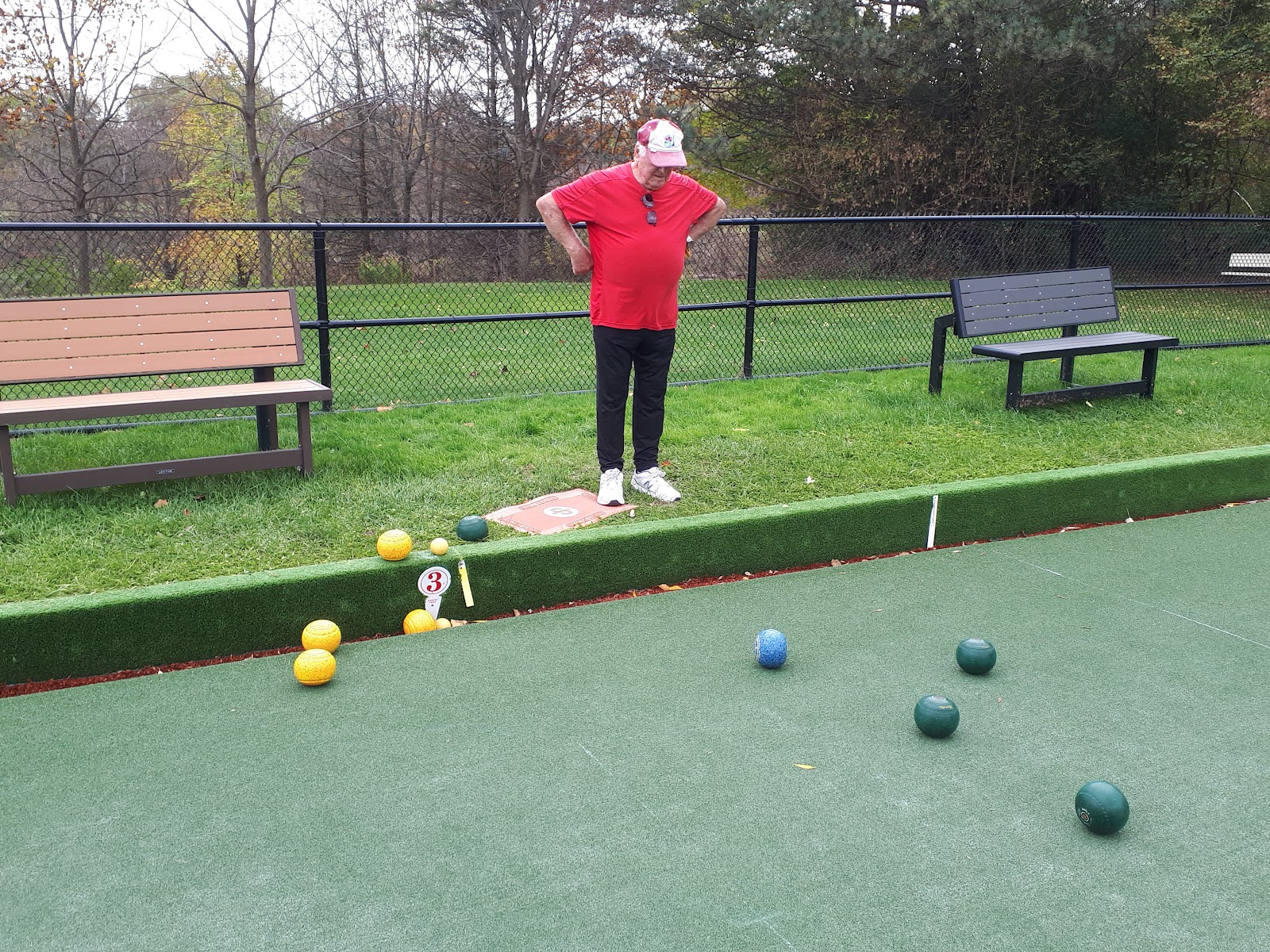A question arose during a club match. Where could the skip of the team not in possession of the rink stand? There was no disagreement that such skip should be required to move if so requested by the bowler on the mat. Rule 13.4 forbids the players in possession of the rink from being interfered with, annoyed, or distracted in any way by their opponents. The question was whether the person directing the head and whose side was in possession of the mat could require the opposing directing person to move entirely away from the side of the rink where the planned bowl was going to be delivered even in the absence of a request from the person on the mat. Is that skip’s personal feeling of annoyance, interference, or distraction encompassed by this rule? On that precise point it would probably take an actual umpire to decide!
But what is indisputable is that a skip, that is not controlling play, because he/she is not in possession of the rink, must be behind the jack. This is established in rule 12.1.2.1.
12.1.2.1 Players at the head-end of the rink and who are not controlling play must stand: behind the jack and away from the head if they are members of the team which is not in possession of the rink.
There might be a question of what ‘behind the jack’ means. Rule 12.1.3 assists in assigning a meaning by specifying what ‘behind the jack’ does not mean: it is not “either level with or in front of the jack.”
- 12.1.3 As soon as a bowl is delivered, a player who is controlling play from a position that is either level with or in front of the jack, must take their position as described in law 12.1.2.1.
So behind the jack does not mean directly behind ( as in parallel with the centre line). It means beyond the jack and closer to the front ditch than the jack.
The next point at issue is what precisely “away from the head” means.
Since the definition of ‘head’ in the Laws of Bowls Mark 4 Edition is “the jack and any bowls which have come to rest within the boundaries of the rink of play and are not dead” it seems likely that all portions of the rink (i) short of whichever live bowl rests closest to the front ditch and (ii) between the left-most and right-most live bowls, would be part of the head.
Thus, the person who is currently directing play could require that all members of the opposing team be outside of, and not obscuring, any part of this defined ‘head.’ Thus it becomes an act of generosity and sportsmanship if that person allows any opponent, including the opponent who in turn directs the head, to stand immediately behind him/ her and inside the head!
So the skip ( or designated directing player) not in possession of the mat should follow any requests of the opposing skip. Otherwise, the Laws of the Sport of Bowls, strictly interpreted, could move him/her much further away!






